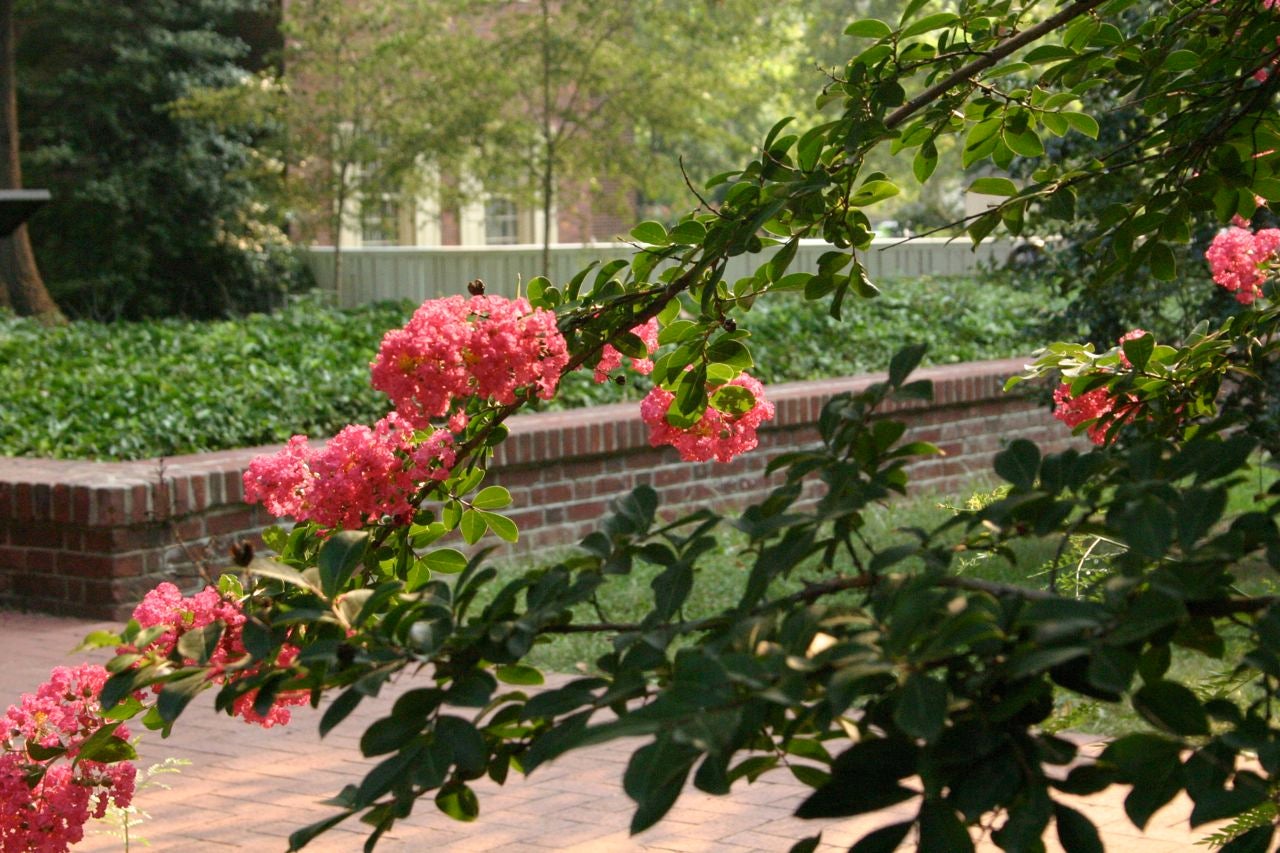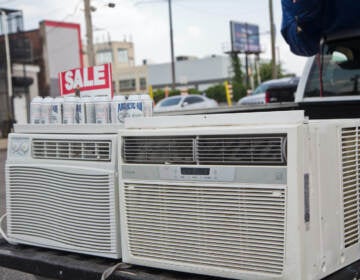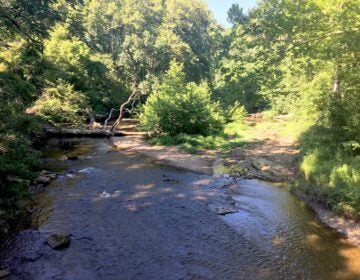Green with envy?

May 18
By Thomas J. Walsh
For PlanPhilly
At a first-of-its-kind Congressional field hearing in Philadelphia, local experts in green infrastructure, water management and corporate green initiatives made their case for federal legislation and funding Monday morning at the Academy of Natural Sciences.
The purpose of the testimony was to find ways of tying federal policy to green infrastructure going forward – well beyond the current financial crisis and its accompanying federal stimulus dollars.
U.S. Rep. Allyson Schwartz of Philadelphia chaired the hearing, coming shortly after she introduced a green jobs bill (HB 2222) in Congress called the Green Communities Act.
“I think there is a good bit of support for the concept of green jobs and green infrastructure,” said Schwartz, in an interview with PlanPhilly before the hearing. “This bill establishes an initiative that recognizes that in some cities, there’s an expertise in how you green communities, and Philadelphia is actually one of those cities.”
Schwartz, who serves on the House Ways and Means Committee and is vice chair of the Budget Committee, emphasizes the economic development aspects of the green economy, no doubt realizing that the term “green” still produces rolled eyes for some of her colleagues on Capitol Hill.
“Philadelphia is considered a very green city,” she said. “What we want to do today is highlight what the city has done but also the private sector. What the legislation does is provide the expertise that does exist nationally in the nonprofit world – like the Pennsylvania Horticultural Society and others like it around the country – to offer that expertise to other cities and communities, to plan for green infrastructure.”
The bill, before the House Transportation and Infrastructure Committee (and its Subcommittee on Water Resources and Environment) targets roughly 80 metropolitan areas, from small cities to the nation’s largest. “Some of this is to make sure that we are really educating ourselves in what can be done and how it can be done,” Schwartz said. “We often don’t think of our cities as places for green innovation, but they certainly are, and this is a chance to highlight Philadelphia as well.”
More than halfway through the hearing, Schwartz was joined on the dais by U.S. Rep. Chaka Fattah. Aides to Rep. Bob Brady were in attendance. The morning was started by an appearance and remarks by Mayor Michael Nutter.
A new model program
“I seem to spend a lot of time here at the Academy,” Nutter said. Just last Thursday, he was part of a forum on sustainable planning and infrastructure investment for the city, in the wake of his recent introduction of Greenworks Philadelphia, a series of steps that “considers sustainability through five lenses – Energy, Environment, Equity, Economy and Engagement.”
Greenworks has 169 initiatives and includes specific, measurable targets that we are looking to achieve by 2015,” including the planting of 300,000 trees the weatherization of a quarter of the city’s 400,000 rowhouses by 2015, Nutter said. “The Obama Administration sees what we’re doing here in Philadelphia and wants to be supportive. Our time has come.”
Two panels gave remarks and answered questions, mostly from Schwartz. The first was comprised of Howard Neukrug, director of the Philadelphia Office of Watersheds and an nationally recognized expert in storm water management systems; Blaine Bonham, executive vice president of the Pennsylvania Horticultural Society; and Susan Wachter, professor of real estate and finance at Penn’s Wharton School.
The hearing was brought to Philadelphia by the Northeast-Midwest Institute, a Washington nonprofit, nonpartisan research group that represents a Congressional coalition of the same name.
“We have kicked off an effort to revitalize older cities,” said Mary Cronin, the coalition’s legislative director, especially those that serve as transportation hubs among what used to be centers of manufacturing.
“Through a landscape of streets, sidewalks, parking lots and asphalt roofs, we have placed a barrier between us and nature,” said Neukrug in his testimony. By implementing green infrastructure initiatives like those in the Greenworks plan, “we will be well on our way to meeting Mayor Nutter’s goal of making Philadelphia the greenest city in America.”
Neukrug reported a recently awarded low interest loan to the city of nearly $200 million for water infrastructure renewal and replacement programs that came through the federal stimulus bill and the Pennsylvania Infrastructure Investment Authority (PENNVEST). In addition, $30 million of “green reserve dollars” have been awarded to spur “innovative, environmentally friendly demonstration projects that might otherwise have not occurred in this economy.”
Nothin’ but net-net
Already, much needed federal, state and local funding has helped the city accomplish a lot of community-based projects that double as storm water management schemes that can be replicated around the nation, Neukrug said. They include:
• Porous pavement basketball courts and sidewalks in Germantown, South Philadelphia and West Philly
• Community rain gardens in Southwest Philadelphia, Northern Liberties and East Mount Airy
• Green streets throughout the city
• Fish migration in Pennypack
• Green roofs, cisterns and rain gardens in schools – public, private and charter
• Restored stream banks being planned for Cobbs Creek and Tacony Creek
Another program was the $4 million fish ladder built alongside the Fairmount Dam behind the Museum of Art at the old Philadelphia Water Works. Its grand opening was after the hearing Monday, and was attended by officials that included Nutter, Schwartz and Fattah.
“If we can transform just 20 percent of the city’s land area to green infrastructure,” the effects would go well beyond sewer water overflow risk, Neukrug said. Among other benefits, it would:
• Create 200 additional recreational user days
• Reduce annual heat-related deaths by 80
• Save 550 million kilowatt hours of electricity
• Reduce the city’s cooling needs by a trillion BTUs
• Reduce our greenhouse gas emissions by more than a million tons
• Create hundreds of green jobs for residents
“Our governing laws, regulations and policies were written before green infrastructure was even a concept,” Neukrug said, adding that we need to re-visit the fed regulatory framework and expand the Clean Water Act, for starters.
“The way I see it, this ought to be part of what we do every time we talk about economic development,” said Schwartz. “It doesn’t just happen. It takes a real commitment on the part of public officials and citizens to keep the city green.”
Schwartz had earlier thanked Bonham, of the Horticultural Society, for suggesting to her the idea of the Green Communities Act.
Despite Philadelphia’s “historically gritty reputation,” Bonham said, 92 percent of city residents believe environmental infrastructure improvements are necessary for an economically competitive future. That figure came from a PennFuture study a few years ago.
The second panel was made up of Liz Garland, associate director for American Rivers, a national conservation organization dedicated to healthy rivers tied to thriving communities; Liz Robinson, executive director of the Energy Coordinating Agency in Philadelphia; and Paul Bonney, vice president and chief counsel for PECO Energy.
Given the nation’s dire economy, the public is increasingly aware of the efforts of the people on both panels, Garland said. “The multiple benefits of these measures, and the flexibility that they provide, make them the perfect response to the uncertainty and volatility of a changing climate.”
Statewide, energy efficiency efforts for infrastructure will create 27,000 new net jobs by 2025, Robinson said. Including indirect employment numbers, the new jobs would be equivalent to 200 new manufacturing plants throughout the Commonwealth, she said.
Contact the reporter at thomaswalsh1@gmail.com.
ON THE WEB:
Greenworks Philadelphia: http://www.greenworksphila.org
WHYY is your source for fact-based, in-depth journalism and information. As a nonprofit organization, we rely on financial support from readers like you. Please give today.






